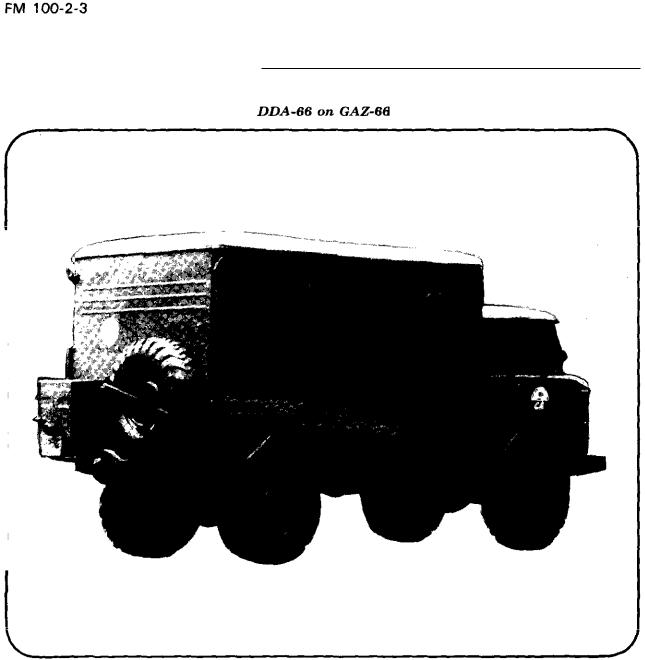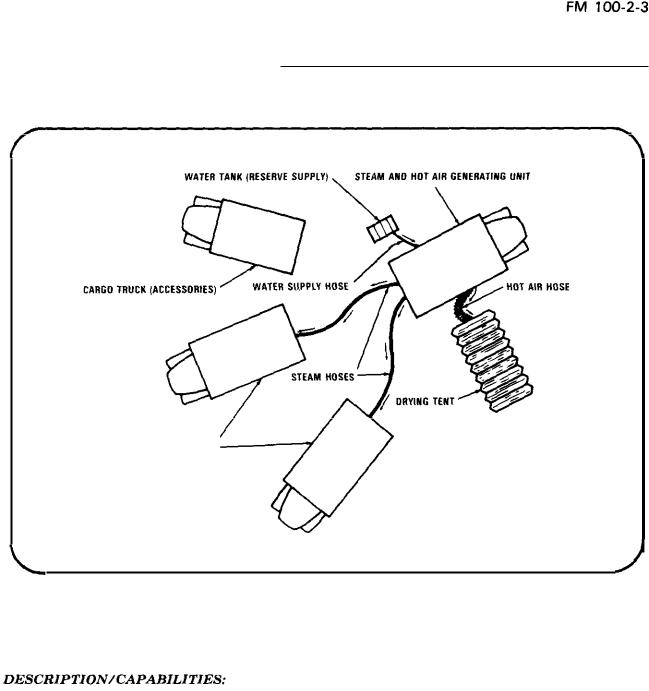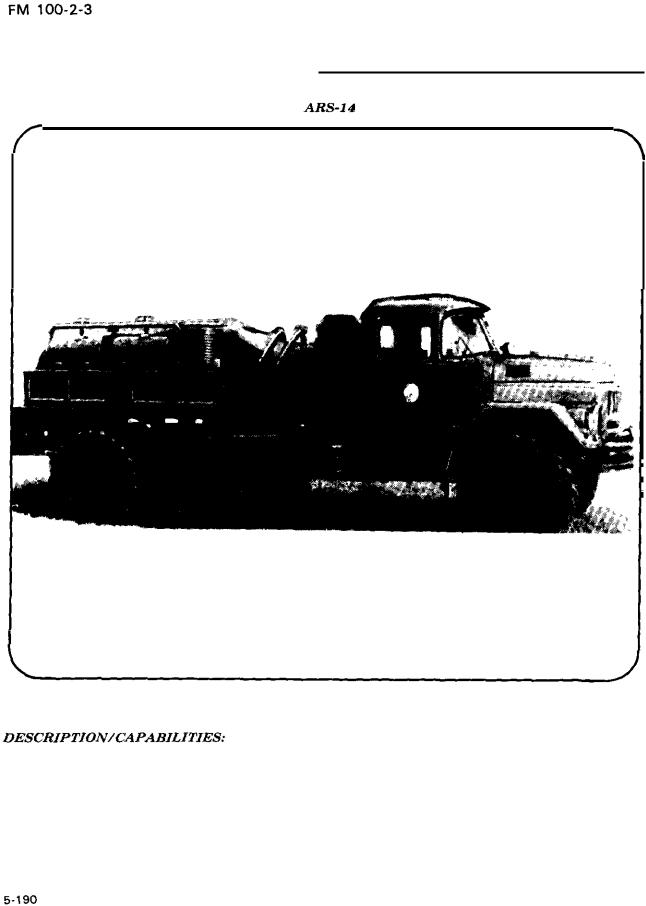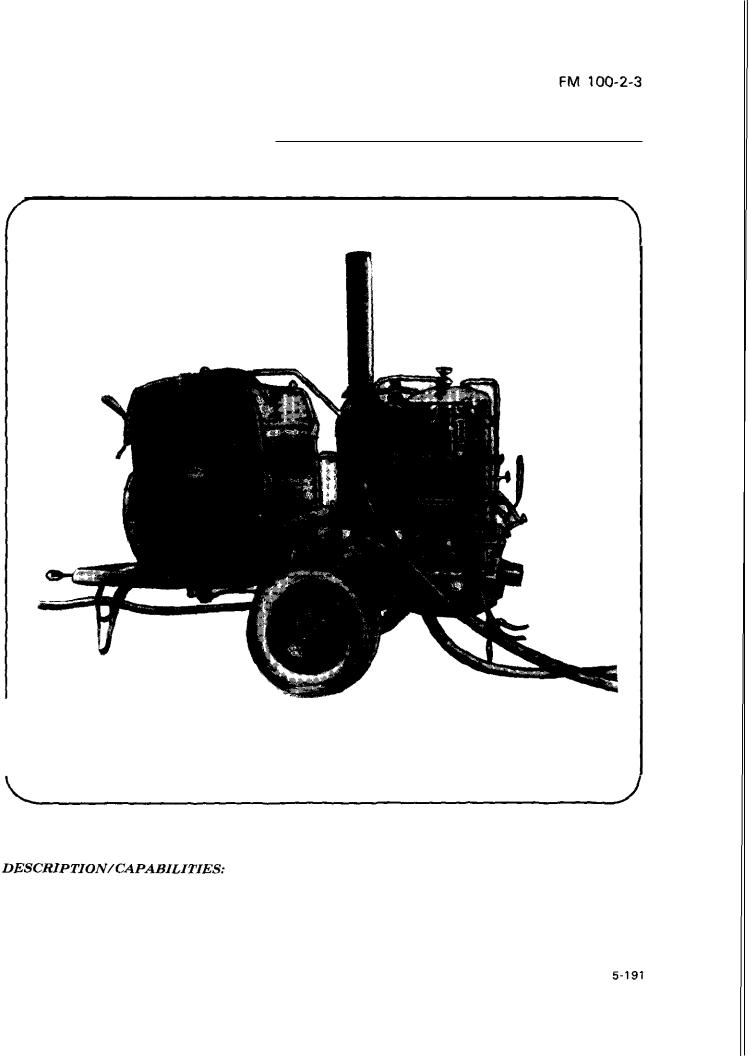
The_Soviet_Army_troops_organization_and_equi
.pdf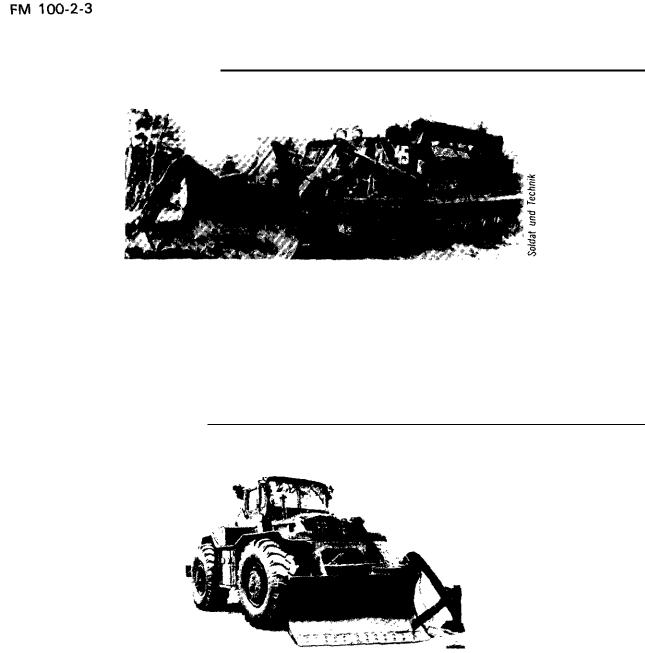
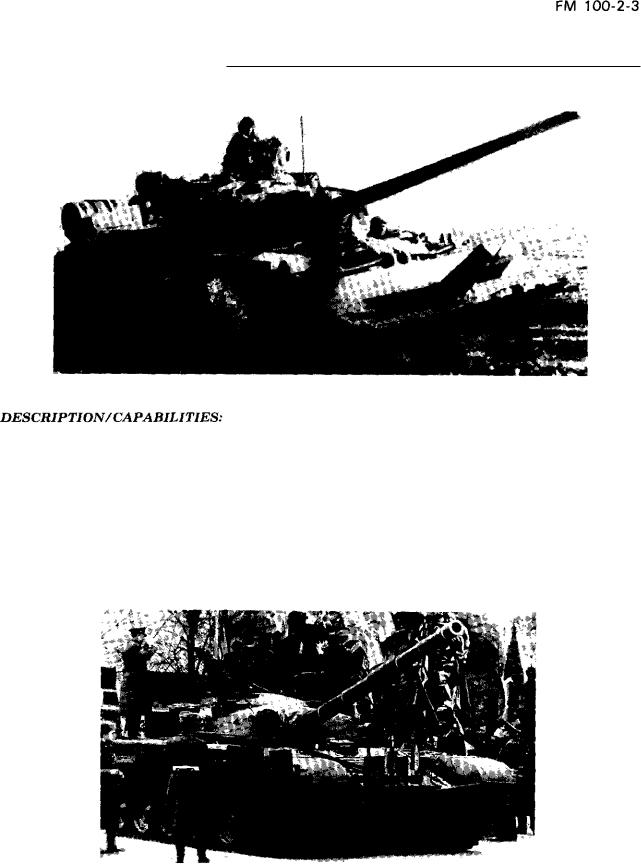

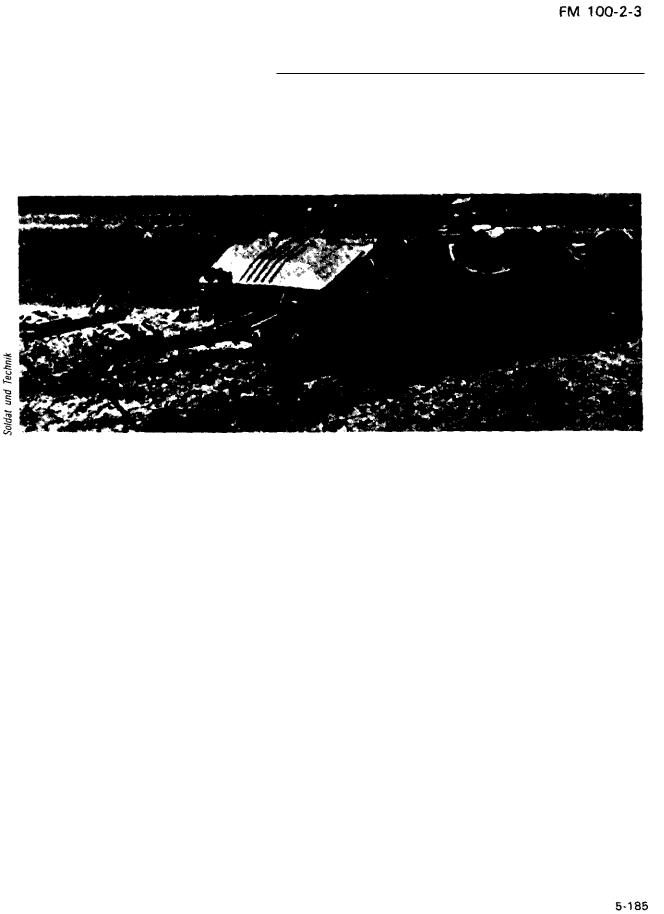

NBC EQUIPMENT
Collective Protection Systems
The Soviets have continuously upgraded NBC |
citation.) The following section discusses only se- |
|||
equipment and capabilities. They have introduced |
lected items of NBC equipment listed under prin- |
|||
many new items and have upgraded older items. |
cipal items of equipment in Chapter 4, as well as |
|||
The DIA publication DST-1640S-048-86provides a |
flame and smoke equipment used by Soviet units. |
|||
complete description of individual and collective |
The NBC collective protection systems provide |
|||
protection equipment; protection and treatment kits; |
a n NBC-free environment i n the crew and pas- |
|||
chemical, biological, and radiation detection instru- |
senger compartments of vehicles. They eliminate the |
|||
ments; flame, smoke and chemical munitions and |
hindrances and discomfort of wearing protective |
|||
equipment; and reconnaissance vehicles, area |
masks and clothing. They also prevent the con- |
|||
marking devices, and warning devices. (See the |
tamination of vital equipment inside the vehicles. |
|||
Reference section of this manual for a complete |
|
|
||
Collective Protection in Combat Vehicles |
|
|
|
|
|
|
|
||
DESCRIPTION: |
|
|
||
The Soviets employ two types of collective pro- |
passenger compartments. The resultant increase in |
|||
tection on combat vehicles: the PAZ (protivo |
air pressure (overpressure) within the vehicle pre- |
|||
atomnaya zashchita)nuclear protection system and |
vents NBC agents from entering through nonair- |
|||
the comprehensive NBC collective protection system |
tight areas, such as gun ports. |
|||
(air filtration and overpressure). Some vehicles have |
|
|
||
both types. The PAZ system consists of a radiation |
LIMITATIONS: |
|||
detector, explosive squibs, and a blower/dust sepa- |
All collective protection systems found on Soviet |
|||
rator (sometimes referred to as a centrifugal particu- |
||||
late air filter). The comprehensiue NBC collective |
combat vehicles are reliable only as long as the |
|||
protection system consists of a blower/dust sepa- |
crew and passengers remain buttoned up inside. |
|||
rator and NBC filter. |
When personnel open vehicle hatches or dismount, |
|||
CAPABILITIES: |
they must assume that the inside compartments |
|||
are contaminated. During subsequent use of the |
||||
When the PAZ system senses the initial pulse |
vehicle, crew and passengers must wear masks and |
|||
protective suits until the vehicle is decontaminated. |
||||
of radiation which precedes a blast wave during |
||||
|
|
|||
a nuclear attack, the radiation detector activates |
REMARKS: |
|||
firing mechanisms for explosive squibs; these squibs |
The T-55 and T-62 tanks were the first Soviet |
|||
automatically close the louvers and apertures of |
||||
engine ports and gun sights. If the vehicle is not |
vehicles with PAZ systems installed as original |
|||
already buttoned up, the sound of the exploding |
equipment. The Soviets may have also retrofitted |
|||
squibs warns the crew to shut all hatches. The |
some T-55sand T-62s with NBC collective protec- |
|||
blower/dust separator filters out radioactive par- |
tion systems. All T-64 and T-72 tanks, as well as |
|||
ticles, but not toxic gases, from the air supply. |
the T-80, have both PAZ and NBC collective pro- |
|||
The comprehensive NBC collective protection |
tection systems. The BMP, BMD, and ZSU-23-4 |
|||
also have both types of protection. Other vehicles |
||||
system protects vehicles against chemical, bio- |
with NBC collective protection (air filtration and |
|||
logical, and radiological contaminants. The system |
overpressure) systems include the following: later |
|||
includes t h e PRKhR radiation a n d chemical |
models of the BTR-60PB, while earlier BTR-60PBs |
|||
detector-alarm, which can automatically alert the |
had only a Blower/dust separator; the BTR-70and |
|||
crew to a nuclear or chemical attack and activate |
BTR-80; the BRDM-2;the MT-LB; the ACRV 1V12 |
|||
the automatic closing system. The blower/dust |
series; the S P howitzers 2S1and 2S3; the S P guns |
|||
separator forces contaminated air through the fil- |
2S5 and 2S7; the SS-21; the SA-4; the SA-6;the |
|||
ter and directs purified a i r into the crew and |
SA-8; the SA-9; and the SA-13. |
|||

